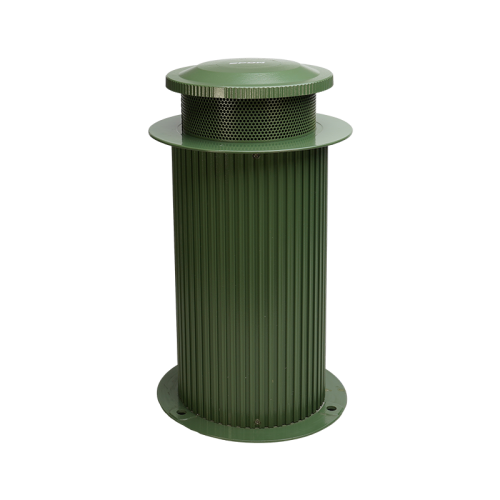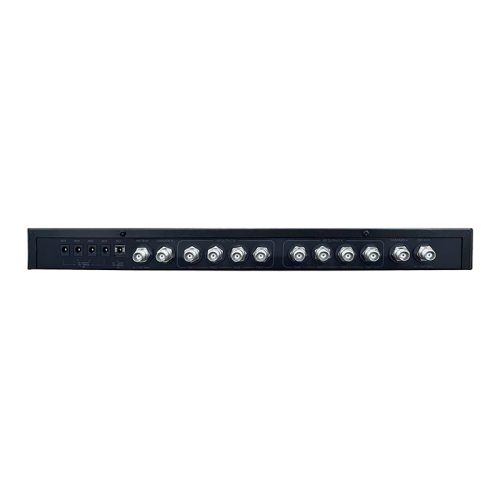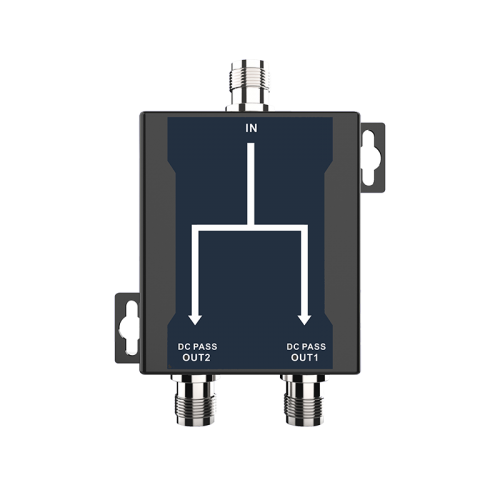Enhance Your Interaction with an Advanced IP PA System Today
Wiki Article
Comprehensive Overview to Public Address Solutions
Public address (PA) systems are frequently encountered in various projects such as workplace structures, residential facilities, industrial office buildings, colleges, hospitals, railway terminals, airport terminals, bus manufacturing facilities, banks, and stations - IP PA System. This overview will give a detailed overview of PA systems
Components of a System
No matter the kind of PA system, it typically includes 4 main parts: resource tools, signal boosting and processing equipment, transmission lines, and speaker systems.Resource Equipment
Songs Gamers: Used for background music. Microphones: Includes basic microphones and zone-select microphones. Voice Storage Gadgets: For saving business and emergency situation program messages.
Signal Processing and Amplification Tools
Audio Signal Cpu: Takes care of audio signal payment, depletion, equalization, and so on. Pre-Amplifier: Pre-amplifies audio signals. Power Amplifier: Amplifies audio signals to drive audio speakers, offering continuous voltage result.
Transmission Lines
The service monitoring platform software application allows the monitoring center to apply centralized administration over the program and intercom interaction systems. It promotes live device status tracking, mistake medical diagnosis, and troubleshooting, strengthening system stability and uniformity.
Audio speakers
Ceiling Audio Speakers: Indoor, flush-mounted in the ceiling, continuous voltage or continuous resistance. Wall-Mounted Speakers: Wall-mounted, constant voltage or constant resistance. Column Speakers: Free-standing, appropriate for indoor or outdoor use. Horn Audio speakers: High level of sensitivity, ideal for interior or outside use. Masked Audio speakers: For outside setups like parks or yards, developed to appear like rocks, stumps, or mushrooms.
Sound Technical Specs of PA Solutions
In everyday atmospheres, common sound stress levels are:. • Office sound: 50-60 dB. • Typical conversation: 65-70 dB. • Fabric factory noise: 110-120 dB. • Small caliber gunfire: 130-140 dB. • Big jet aircraft noise: 150-160 dB.Signal-to-Noise Proportion (SNR)
SNR gauges the ratio of the signal voltage to noise voltage, expressed in decibels. A greater SNR shows less sound and much better audio quality. Generally, SNR should be at the very least 63 dB, with high-fidelity audio speakers getting to over 110 dB.
Input Level of sensitivity
This is the minimum input voltage needed to achieve the rated output power. Greater sensitivity indicates less input signal is needed. Normally, power amplifiers have an input sensitivity of 0.775 V (0 dB) to 1.5 V (+6 dB).
Optimum Output Power (Audio Speakers)
The maximum power a speaker can handle in short ruptureds without damage.
Rated Power (Audio Speakers) . The continuous power an audio speaker can handle without distortion, determined in watts (W) Rated power is an ordinary value, and audio speakers can handle peak power approximately 2-3 times the ranked power.
Continuous Voltage vs. Continuous Insusceptibility Outputs
Continuous Voltage (70V or 100V) Uses voltage to drive audio speakers, allowing longer transmission ranges and multiple audio speakers in parallel. Audio top quality is slightly inferior compared to continuous resistance systems. Power amplifiers have to match the voltage rating of the speakers to avoid damages.
Consistent Resistance. Utilizes present to drive audio speakers, giving far better audio quality however restricted transmission range (as much as 100 meters) Resistance matching is crucial; for example, an 8Ω amplifier ought to be matched with 8Ω audio speakers.
Picking and Configuring Audio Speakers
Audio speaker Selection
Indoor Spaces with Ceiling: Use flush-mounted ceiling speakers without a back cover. Indoor Spaces with Just a Framework: Use ceiling speakers with rear covers or hanging ball-type speakers. Outside Areas: Use weatherproof column speakers or horn speakers. Parks and Gardens: Use concealed audio speakers made for visual objectives. High-End Interiors: Usage stylish dangling speakers. Fire-Safe Locations: Usage fireproof speakers with closed layouts.
Speaker Arrangement
Speakers should be distributed evenly across the service area to make sure a signal-to-noise ratio of a minimum of 15 dB. Regular history noise degrees and recommended audio speaker placement are:. High-end office corridors: 48-52 dB. Huge shopping center: 58-63 dB. Active road locations: 70-75 dB. Audio speakers should be placed to guarantee an audio pressure degree of 80-85 dB in a lot of atmospheres. Ceiling speakers need to be spaced 5-8 meters apart, or 8-12 meters for history songs only. For emergency situation broadcasts, guarantee that no location is more than 15 meters from the local audio speaker.
Amplifier Sizing
Computation Method:
For solution and business PA systems: P= K1 × K2 × ΣPo where:. P = Total amplifier output power (W) K1 = Line loss payment variable. K2 = Aging variable (1.2-1.4) ΣPo = Complete power need. For fire alarm system systems, make use of 1.5 times the overall variety of audio speakers.
Instance Calculation:
For a history songs system with 10 speakers at 20W each: P= 1.26 × 1.2 × 10 × 20W × 0.7= 211W. Last amplifier ability should be 1.3 times this worth: 211W × 1.3= 274W
Installment Requirements
Speaker PlacementAudio speakers should be evenly and purposefully distributed to fulfill insurance coverage and sound top quality needs
Power Supply
Small PA systems can utilize routine power electrical outlets, while systems over 500W call for a specialized power supply. Power should be secure, with automated voltage regulators if necessary. The power supply should be 1.5-2 times the equipment's power usage
Cable and Avenue Installation
Use copper-core cables for signal transmission. Cables ought to be shielded and routed via appropriate channels, preventing disturbance from electric lines. Guarantee appropriate splitting up in between power and signal lines.
Lightning Protection and Grounding
PA systems need appropriate grounding to stop damages from lightning and electric disturbance. Usage dedicated grounding for devices and ensure all grounding actions meet security requirements
Setup High quality
Cable and Adapter Top QualityUse high-grade cable televisions and adapters. Make certain links are protected and appropriately matched to avoid signal loss or interference.
Audio speaker Links
Keep proper stage placement between speakers. Use reputable methods for connecting wires, such as terminal or soldering blocks, and safeguard connections from ecological damage.
Grounding and Safety And Security Checks
Confirm all grounding is appropriately mounted and inspect the security of power connections and equipment setups. Carry out thorough examinations before finalizing the installment.
Examining and Modification
Evaluate the entire system to guarantee all parts operate appropriately and meet layout specifications. Adjust setups as needed for optimal efficiency.
Craftsmanship Demands for Public Address Solutions
Building Quality DemandsThe quality of construction in a public address (PA) system job is critical to fulfilling design specifications and individual demands. It is crucial to strictly comply with the layout plans, stick to standards, stay clear of rework and hold-ups, and maintain in-depth construction logs. Secret locations to concentrate on include:
Cable Selection and Installment
During the building and construction of a PA system, attention is usually focused on devices, yet the selection of transmission cable televisions is also vital for attaining adequate audio top quality. Top quality broadcasting devices (amplifiers, audio speakers, and so on) is necessary, but the top quality of the transmission cords additionally affects sound top quality.
Parallel audio speaker cords have inherent capacitance between the wires, which is not appropriate for long-distance transmission as it can attenuate high frequencies and create vague or muffled high sounds. Twisted set wires can effectively overcome this issue and should be utilized for long-distance transmission.
Protected twisted pair cable televisions avoid electromagnetic interference and boost cable television resilience, making them appropriate for long-distance installments. Thicker cable televisions decrease transmission loss yet rise price and installation trouble. Use balanced links for all signal connections in between PA system tools, with firm endpoints. For systems with fire alarm system features, use fireproof or flame-retardant IP Speaker copper-core cable televisions. Cable televisions ought to be transmitted with steel conduits or wire trays, and ought to not share trays with lights or high-voltage line. Fire alarm system wires should have fire defense procedures. The bending span of cable televisions ought to be no much less than 15 times the wire diameter, and power line need to be divided from signal and control cable televisions. Confirm cable sizes prior to installment and match them to the layout drawings, minimizing cable splices. When splicing is needed, make use of specialized connectors and leave appropriate cable length at both ends with clear irreversible markings .

Attaching Speakers and Broadcast Lines
When connecting audio equipment, it's essential to ensure stage uniformity between audio speakers and program lines. Stage disturbance between audio speakers can trigger substantial variants in sound pressure degrees, resulting in unequal audio distribution. Consequently, stick strictly to electrical wiring tags and standard connection approaches .
Three common link techniques in PA systems are:. Twisting Technique: Stripping insulation from wires, turning them together, and protecting them with tape or clamps. This technique is simple but may degrade in time. Screw Terminal Method: Stripping insulation and inserting cords into screw terminals, then tightening up the screws. This approach is frequently used. Soldering Method: Stripping insulation, turning cables, and soldering them with each other, after that covering with tape. This method is more suitable and reliable for high-demand or moist environments.
No matter the technique, use tinned cord to assist in soldering and stop corrosion. Usage PVC or metal avenue to safeguard exposed wires from junction boxes to speakers.
System Grounding
To reduce disturbance from the power system, separate protective and functional groundings should be developed. Recommended method is to install separate copper strips for strong and weak electric systems in their particular vertical shafts. The total grounding resistance need to not exceed 1Ω.
Building and construction Assessment
Due to the intricacy of PA systems with many connections and parts, thorough examination is required. General inspections should consist of:
Safety checks of tools installation. Confirmation of high-voltage line arrangements (SPON Communications). Accuracy of links and discontinuations
Special interest should be offered to gadget settings, such as impedance matching buttons on audio speakers. Verify that buttons are set properly to prevent damage. Inspect the output selection activates signal source tools, setups on signal handling devices, amplifier bridging switches, and power supply setups. Once these steps are confirmed, plan for devices debugging. Given that debugging methods vary based on specific task demands, they are not covered thoroughly right here.
High quality Records Certificates, technological requirements, and paperwork for audio speakers, enclosures, transformers, controllers, outlets, amplifiers, audio handling devices, shielded wires, and so on.
Pre-installation, concealed inspection, self-inspection, and mutual inspection records.
Records of layout adjustments and last drawings - SPON Communications. Quality evaluation and examination records for avenue and wire setup
Records of PA system installment and debugging.
Major Installation Demands
Equipment Installment OrderPA system equipment is generally set up in cabinets. For less complex systems, a 1.0-meter closet could be sufficient. Place often utilized tools like the primary program controller on top for simple access. For more complex systems with a 2.0-meter cupboard, setting often made use of devices between 0.8 to 1.5 meters for comfort .
Tools Link Order
The mixer outcomes are distributed to each amplifier, and if using pure power amplifiers, attach to the INPUT audio input. Amplifier results then connect to addressable terminals, zone control boxes, or area selectors, and lastly to the speakers.
Electrical wiring Considerations
For substantial wiring, different sound and high-voltage line utilizing different manufacturers' cable televisions can aid prevent confusion. Plan electrical wiring beforehand to avoid missing cable televisions, which would certainly call for redoing the entire setup.
Power Supply
Utilize a devoted power sequencer for PA systems to make sure consistent power management and consistent tool startup series. The major power supply ought to consist of a ground line to safeguard devices and stop static-related dangers
Devices Selection
Do not depend only on look; consider user evaluations and market reputation. Products from reliable makers with extensive testing and experience are normally much more trustworthy
Wireless Microphones
For cordless microphones, pick UHF designs for better variety and signal stability. For mobile use, like headset microphones.
Connection Cables
Use solid connections for durability and avoid depending on adapters, which can create loose connections with time. Correctly solder links to make certain longevity and ease of maintenance.
Cupboard Installment
If using deep power amplifiers, make certain the cabinet dimensions (e.g., 600x600mm) work with the tools. Step cupboard deepness and spacing prior to setup.
Appropriate preparation, high-quality equipment, and careful installment and upkeep are vital to achieving ideal audio top quality and reliable performance in a PA system.

Audio speakers must be put to make certain an audio stress degree of 80-85 dB in the majority of settings. When attaching audio tools, it's critical to make certain stage uniformity in between speakers and broadcast lines. Phase disturbance between audio speakers can trigger considerable variations in audio stress degrees, leading to unequal sound distribution. Amplifier results then link to addressable terminals, zone control boxes, or zone selectors, and finally to the audio speakers.
Report this wiki page